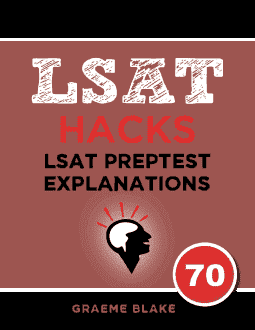QUESTION TEXT: At one time, many astronomers assumed that Earth…
QUESTION TYPE: Necessary Assumption
CONCLUSION: Astronomers thought that the stars were within a few million miles of the Earth.
REASONING: The astronomers thought that the stars moved around the Earth. If the stars were very far away, they would have to move very fast.
ANALYSIS: The flaw is not thinking that the stars revolve around the Earth. That's just context to set up the situation. You can reason correctly from false hypotheticals, i.e. “If unicorns exist, then….”.
The conclusion is the second sentence (“They concluded”). The astronomers think the stars can't be far away, otherwise stars would move very fast. So what….why is it a problem for stars to move fast? The astronomers only implied that great speeds were a problem. If an argument implies something but doesn't state it, then that is an assumption.
You can use some outside knowledge on this question. Stars appear in the same position each night. Everyone agrees on this – it's why sailors could navigate by the stars. It's why astronomers thought stars would have to travel fast each night.
___________
- The astronomers were assuming that the stars do revolve around the Earth. This talks about what happens if they don't. It's as though you're planning for how to take the LSAT, and I make an argument about what happens if you weren't required to take the LSAT. Irrelevant.
- Why would it matter if one star moved 0.00001 mph faster than another star?
- If you negate this, you get “Earth remains motionless while the stars revolve around it”. That doesn't contradict the astronomers.
- CORRECT. The astronomers' only reason for saying the stars couldn't be far away was that the stars would move quickly if they were far away.
Negation: Stars move at very great speeds. - If you negate this, you get “stars more than a million miles away could not reappear in the same position”. This strengthens the argument: the stars have to be even closer. The astronomers were predicting a maximum, not a minimum.


Is this not the sufficient assumption because we are given the necessary part of the argument?
I have
p: star far -> great speed
c: ~star far
It seems like the sufficient – ~great speed – is missing. Thus, the unstated assumption. How often are sufficient part of the argument necessary? I don’t if I see a lot of these. I usually get the weaken eliminators correct but always struggle with n.assumption when they have two answer choices with the premise and necessary switched up. Any hints??
This question was fairly easy because the answer choices were easy to eliminate. How do I attack them when the answer choices are hard to differentiate? Thanks i. advance!